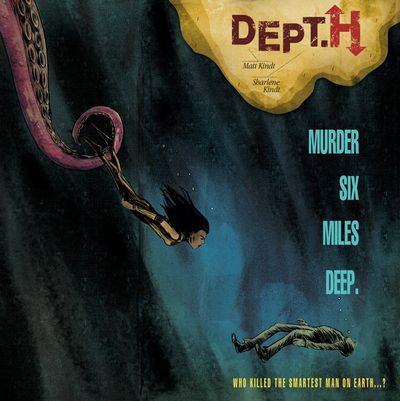
At the bottom of the ocean, no one can hear you scream. In Dark Horse ComicsÔÇÖ upcoming series Dept. H, a woman named Mia finds that out firsthand as she travels to a remote undersea research station to investigate a murder. It debuts on April 27 and itÔÇÖs an Agatha Christie-esque, locked-room mystery: Since only a handful of people work down there and you canÔÇÖt exactly run too far from the crime scene, the culprit must still be lurking nearby. The story is as high-pressure as a deep-sea diving suit.
What intrepid explorers would dare take this deep dive into death? None other than the husband-and-wife team of Matt and Sharlene Kindt. Matt is the writer, penciler, and inker perhaps best-known for his brain-twisting Dark Horse series Mind MGMT and his work on the Valiant Comics superhero series Rai, Ninak, and Unity. Sharlene provides the comicÔÇÖs gorgeous watercolors. WeÔÇÖre happy to present the first six pages of Dept. H No. 1 below (three of which are previously unreleased) and a conversation with the Kindts, where we talk about race, wordplay, and colossal squids.
What was the kernel of an idea from which Dept. H sprouted?
Matt: Dept. H started as a sort of belief IÔÇÖve held for a long time. As a huge fan of space travel and science fiction, IÔÇÖve always wondered why we were searching the infinite cosmos for the briefest speck of life somewhere else, when weÔÇÖre literally sitting on an ocean teeming with undiscovered life. ItÔÇÖs a bird-in-the-hand vs. bird-in-the-bush scenario. I get the desire to travel to another planet. ItÔÇÖs incredible. ItÔÇÖs inspiring. But I also think people want to keep moving forward and on to the new and better and more exciting thing ÔÇö sometimes at the expense of what weÔÇÖve got.
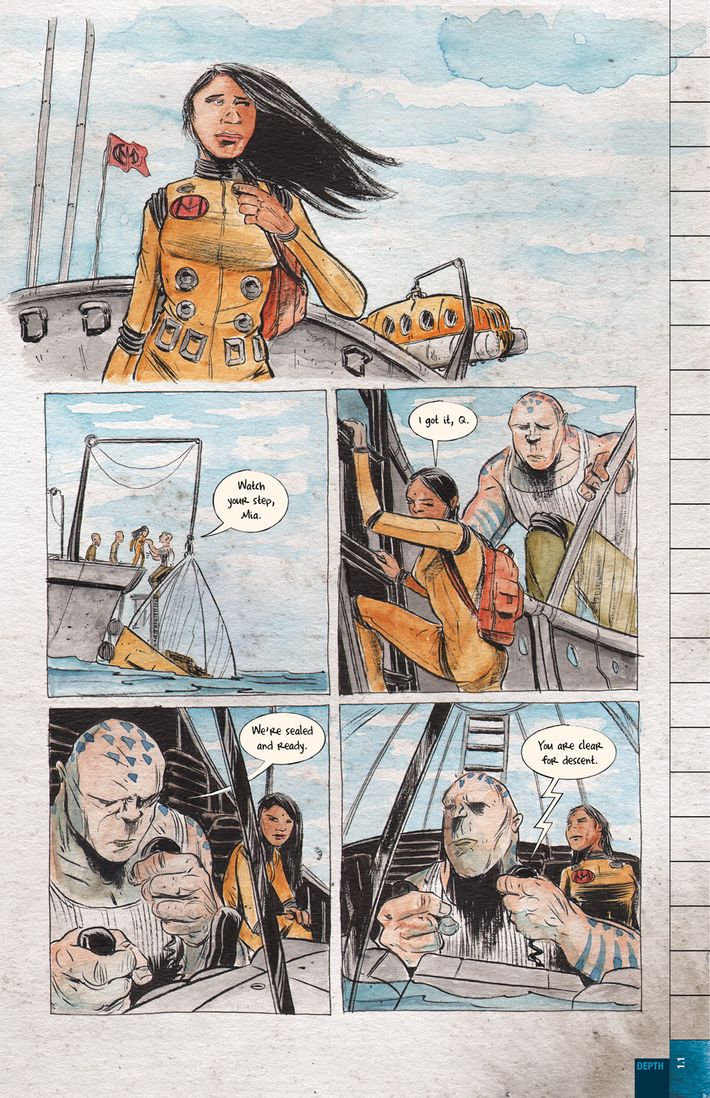
On a small scale, itÔÇÖs [a story] about a murder and survival and discovering the truth. But the greater conflict driving the series is, What is our mission? What should we be doing with our time on Earth? What is most important? Family? Humanity? Earth? The cosmos? How do you prioritize those things? That is one of the big questions in the series and the answer is going to tie directly into the pulp answer of ÔÇ£whodunit.ÔÇØ
Mia is a woman of color and Matt has made an array of comics stories that donÔÇÖt star white men. To what extent do comics creators have a responsibility to create characters who arenÔÇÖt white men?
Matt: I started writing female characters pretty early on, not as a way to represent the under-represented. I did it to challenge┬ámyself as a writer and human being. IÔÇÖm as bored as anyone to read about a┬áwhite male in his forties. I am that. I get it. IÔÇÖm┬áconstantly craving different viewpoints. The best part of writing, to me, is┬áputting myself 100 percent into a foreign point of view. When you do that, you pay more attention to everything ÔÇö not just the big things┬álike race and religion and how those impact your outlook, but even just small things. Details about how characters run or walk or talk differently. Mia is Indian and itÔÇÖs been a great way to help me explore cultural differences and ideas regarding race, family, and thoughts on life. ItÔÇÖs pushed me to have conversations with my friends and┬áacquaintances that I would have┬áordinarily been too reserved to talk about.
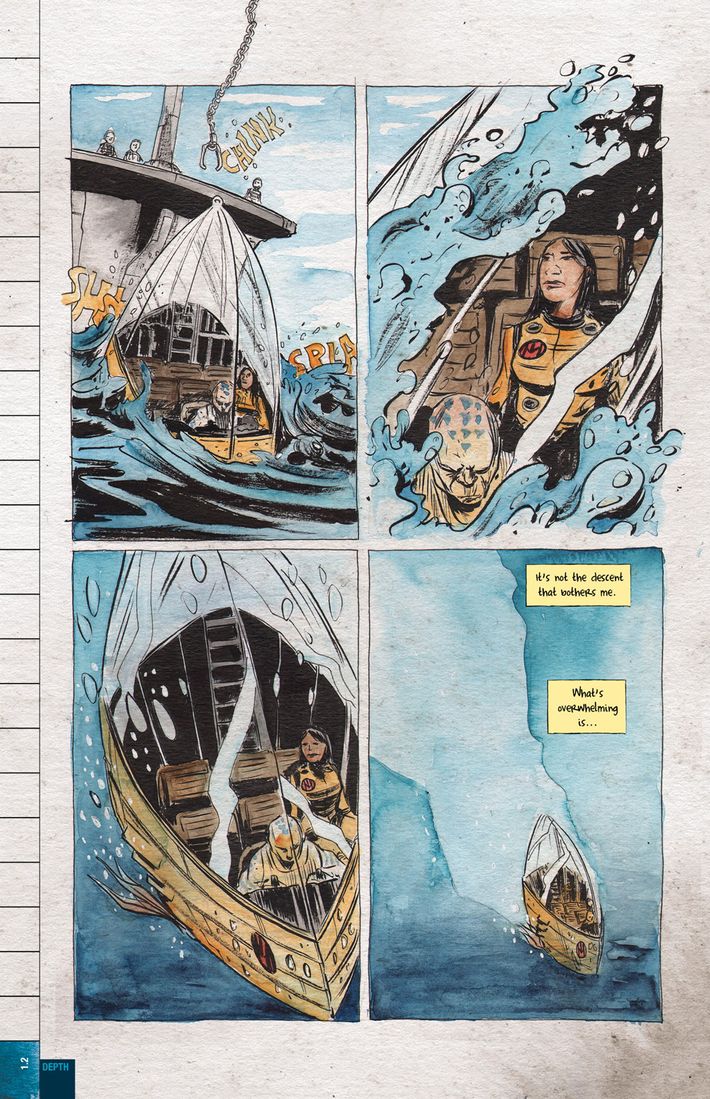
Sharlene: Though I really respect the medium, I am not a comic-book reader. I think Matt views readers like me as a fun challenge. How does he take a non-comic-book reader and make them want to read comics? The result is a smart story with intriguing characters. If you have that, the subject doesnÔÇÖt matter.
Matt: Sharlene is my ideal audience. SheÔÇÖs an intelligent reader that finds comics to often be lacking. Finding that thing thatÔÇÖs lacking in them and providing it is really important to making the industry grow.
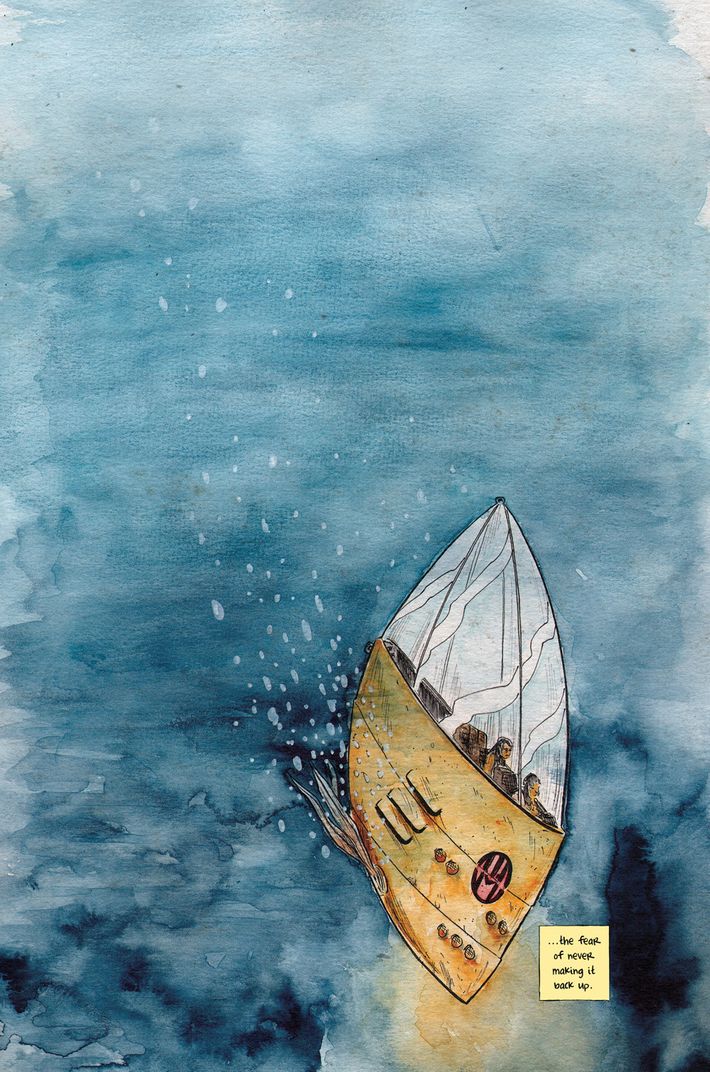
The series features full-page schematics explaining how various devices or creatures work. Matt, youÔÇÖve done those a lot in your previous work, too. WhatÔÇÖs appealing about making them?
Matt: To take full advantage of comics as a medium, every part of it should be used. Inside covers and back covers in monthly comics are wasted. TheyÔÇÖre usually filled with a nice pin-up and copyright info or ÔÇö worst case ÔÇö an ad. ItÔÇÖs such a missed opportunity. These are lessons I learned on Mind MGMT. That series taught me to look at everything. Look at how the logo is used. What conventions of comics can we bend or break to benefit the story?
For Dept. H, in particular, there is a lot of technology and material that the characters are interacting with that is odd and often bizarre. I wanted to keep the story as grounded and as human as possible ÔÇö but the reality of working at extreme depths in the ocean required a little bit of speculation on my part. Those depths are incredibly hard to get to, let alone move around in. I took a lot of visual and design cues from the living things that can exist that deep. Using that as a starting point it really informed the organic look of the diving suits and the submarines that the characters use.
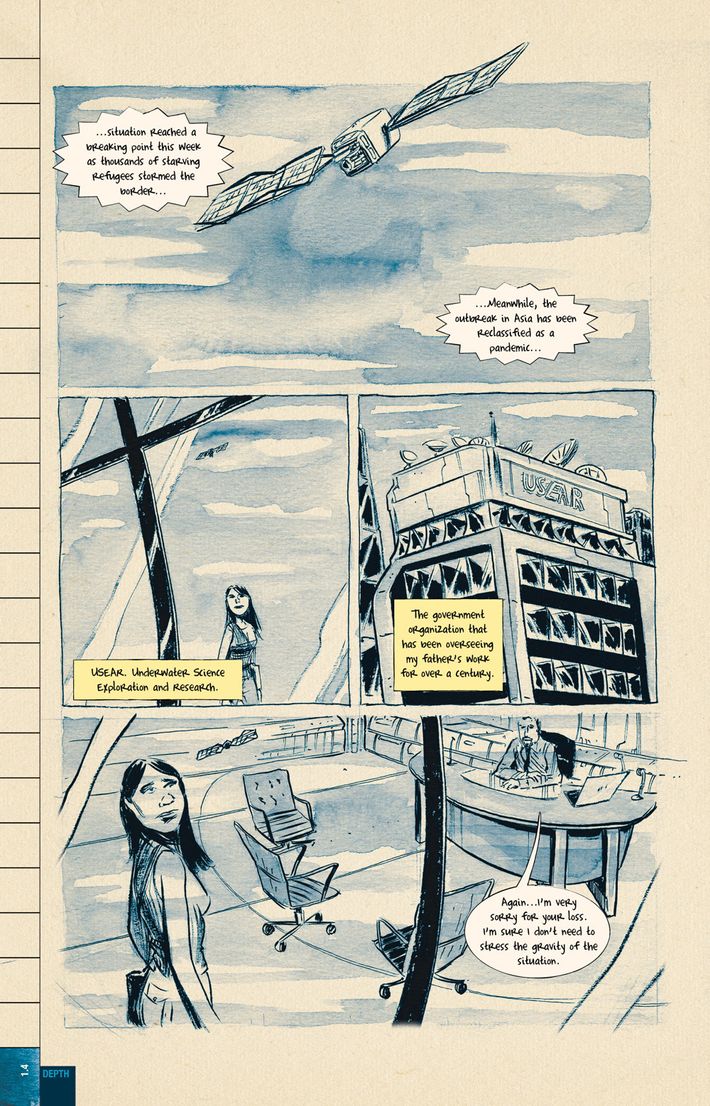
WhatÔÇÖs the division of labor between you two?
Matt: I write, pencil, ink, and Sharlene paints everything. Depending on the scene, and especially with covers, weÔÇÖll discuss the design and look and the emotion weÔÇÖre trying to get across and hash out different possibilities. Especially at the beginning, weÔÇÖd do some art tests to figure out process and style and different looks for everything. Color is tricky because of the extreme environment and flashbacks, so every month, we have a long meeting and discuss the look and feel of the issue.
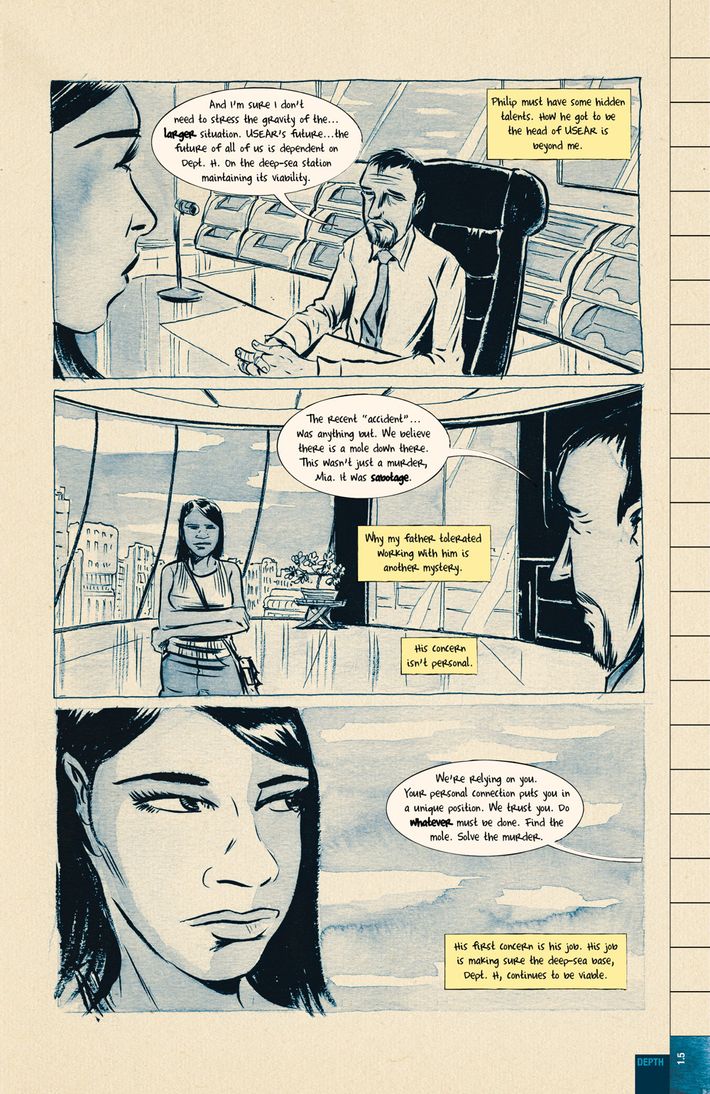
Sharlene: Ever since we met at college, we have worked together on so many projects, from art shows to how we merch the table at cons. The first time I laid eyes on Matt, he was arriving late to 3D-design class. The only seat left was the table right in front of me. The teacher asked us to fold a piece of paper into a paper airplane. He didnÔÇÖt bring paper, so he turned to ask me for a piece. I had already assessed the fact that he would need one, so I was already tearing out a piece as he turned around. He made an airplane that flew swift and straight. Mine? Not so much.
Matt: Story of our relationship in microcosm. You canÔÇÖt fly a paper airplane if you donÔÇÖt have paper.
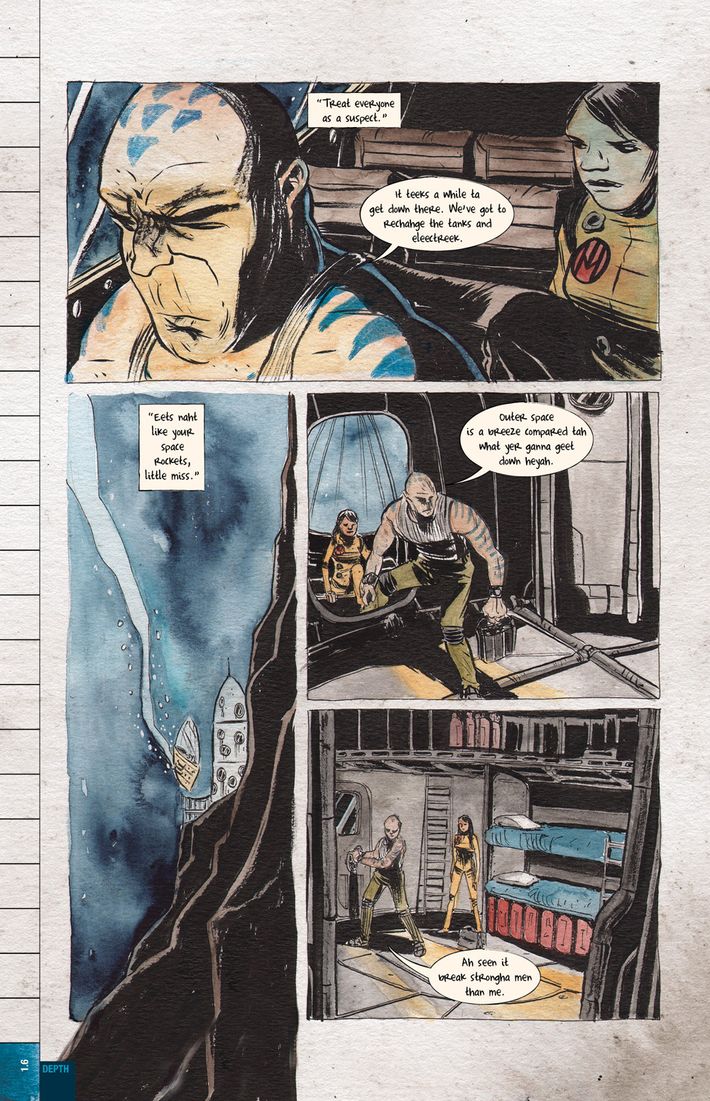
What kind of research did you do for this series?
Matt: IÔÇÖd planned on learning to scuba dive but I chickened out. Apparently IÔÇÖm terrified of drowning. The good thing is, IÔÇÖm able to tap into that deep-seated fear to make this story as claustrophobic and terrifying as possible. We watched a lot of documentaries ÔÇö the main ones being [James] CameronÔÇÖs Deepsea Challenge and [Jacques] CousteauÔÇÖs World Without Sun ÔÇö once we knew this was going to be the next project. That was a big help for getting us into the mind-set of deep-sea diving, but also visually inspirational ÔÇö the lighting extremes and the kind of desolate nature of going to the deepest part of the ocean. ItÔÇÖs a lonely place.

